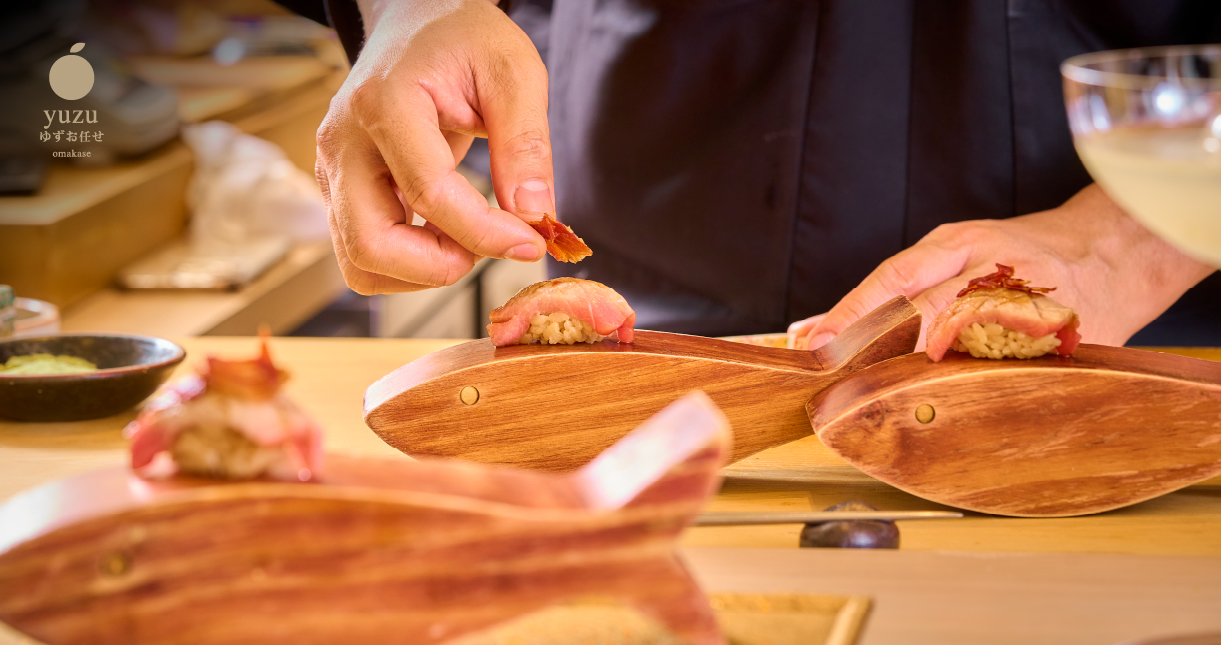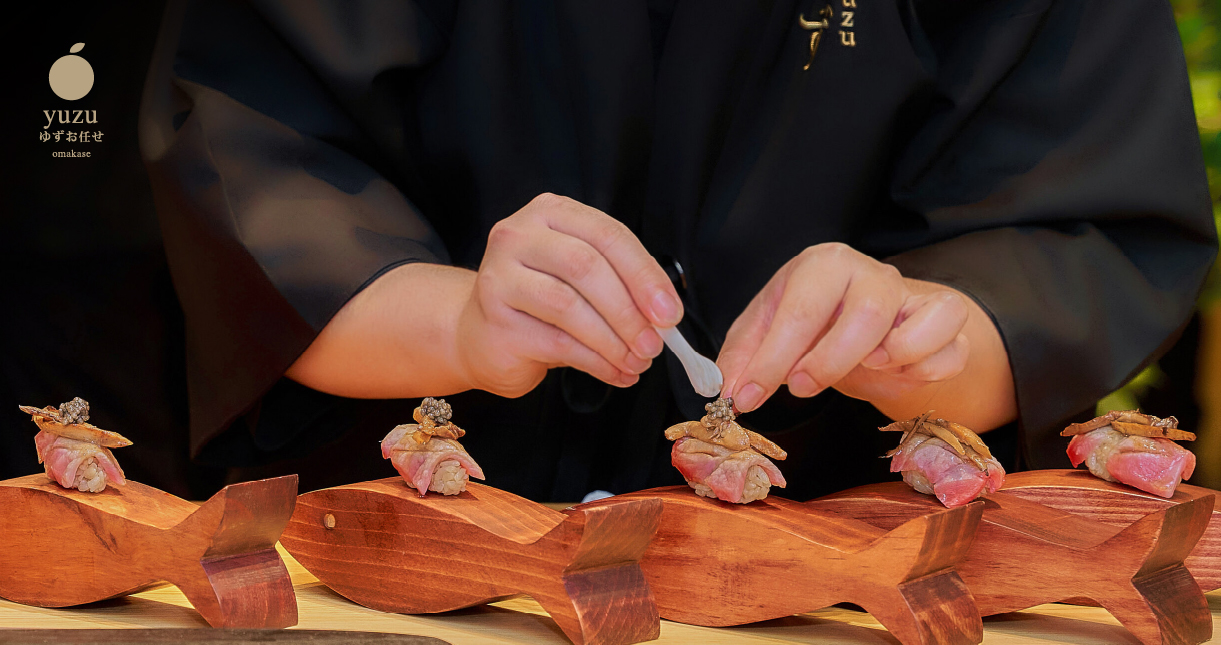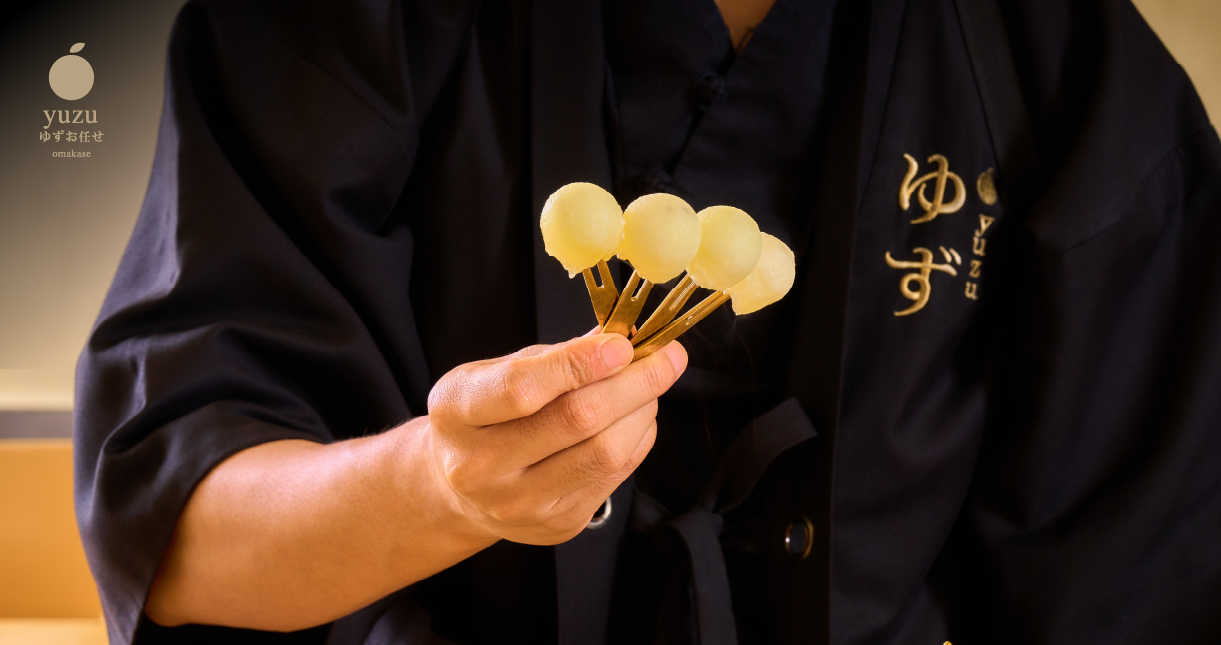
The Japanese Sushi Counter: A Global Dining Phenomenon
The Rise of Sushi Counter Dining Around the World The art of sushi has transcended the borders of Japan to become a global dining phenomenon, with the sushi counter at its heart. This unique style of dining, where guests sit at the counter and enjoy sushi prepared directly by the chef, offers an immersive experience that blends culinary artistry with cultural traditions. Over the years, sushi counters have become an iconic feature in Japanese restaurants worldwide, attracting food enthusiasts who seek not just a meal, but an engaging and intimate dining experience.
The World ● 2024 Oct 30
The Japanese Sushi Counter: A Global Dining Phenomenon
In this article, we will explore the global appeal of the sushi counter and its deep-rooted significance in Japanese food culture, examining why this dining style has become a beloved tradition for sushi lovers around the world.
1. The Origins of the Sushi Counter in Japanese Food Culture


In Japan, the sushi counter has long been an integral part of omakase dining, a style of dining where the chef curates the entire meal based on the freshest ingredients available that day. The word "omakase" translates to "I leave it up to you," and this trust-based approach forms the foundation of sushi counter dining.
Omakase and the Sushi Counter: A Relationship of Trust
At the sushi counter, the relationship between the diner and the chef is central to the experience. Guests place their trust in the chef, who uses their expertise to craft a personalized dining experience. Every piece of sushi is made to order and served immediately, ensuring that the flavors and textures are enjoyed at their peak. This direct interaction between chef and guest is one of the defining features of sushi counter dining and is a tradition that has been passed down through generations of Japanese sushi chefs.
Cultural Highlight
The omakase experience embodies the trust between chef and diner, a cornerstone of the sushi counter tradition.
The Role of the Itamae (Sushi Chef)
At the center of the sushi counter is the itamae, or sushi chef, who is not only a master of culinary techniques but also a storyteller, cultural ambassador, and artist. The chef’s role goes beyond simply preparing food; they engage with diners, explain the nuances of each dish, and share their knowledge of the ingredients. This personal connection adds a layer of depth to the dining experience, turning it into an educational journey through the world of sushi.
Cultural Highlight
The itamae plays a pivotal role in the sushi counter experience, offering expertise and a personal connection to the food.
2. The Global Appeal of the Sushi Counter Experience
As sushi has gained popularity worldwide, the sushi counter has become a beloved dining option in cities across the globe, from New York and Paris to Sydney and Bangkok. Sushi counters offer a unique and engaging dining experience that sets them apart from traditional restaurant seating, making them a global dining phenomenon.
Intimacy and Engagement: A Personalized Dining Experience
One of the reasons sushi counters have gained such widespread appeal is the intimate, personalized experience they offer. Diners are seated directly in front of the chef, allowing them to observe the meticulous preparation of each dish. This close proximity to the chef provides a sense of connection to the food and enhances the overall dining experience. The opportunity to ask questions, learn about the ingredients, and witness the chef’s artistry in real time makes sushi counter dining a dynamic and engaging experience.
Global Appeal
The interactive nature of sushi counter dining appeals to food lovers who value an intimate, personalized experience.
A Front-Row Seat to Culinary Artistry
For many diners, sushi counter dining is as much about watching the culinary performance as it is about tasting the food. The precision with which the chef slices the fish, the careful molding of rice, and the thoughtful arrangement of each piece of sushi are all part of the show. This performance element elevates the meal from simply eating to witnessing culinary craftsmanship in action.
In global cities where food culture is celebrated, sushi counters have become hotspots for gourmet experiences, offering a blend of performance art and fine dining that attracts locals and tourists alike.
Global Appeal
The culinary performance at sushi counters turns dining into an immersive experience, engaging both the palate and the senses.
3. Sushi Counters as Cultural Hubs: Preserving Tradition in a Modern World
While sushi counters have become a trend in many parts of the world, they also serve an important role in preserving Japanese culinary traditions. The sushi counter is a place where ancient techniques, recipes, and philosophies are passed down, ensuring that the art of sushi remains true to its roots even as it evolves to suit modern tastes.
Respecting Tradition While Embracing Innovation
In Japan, sushi is steeped in tradition, and many of the techniques used by sushi chefs today have been practiced for centuries. However, as sushi has gained international popularity, chefs around the world have also embraced innovation, incorporating local ingredients and modern techniques into their sushi offerings. Despite this innovation, the sushi counter remains a place where the core values of sushi—freshness, simplicity, and respect for the ingredients—are preserved.
Cultural Highlight
The sushi counter allows for the blending of tradition and innovation, where chefs can introduce new ideas while honoring the time-tested principles of sushi making.
A Global Gateway to Japanese Culture
Sushi counters are more than just places to eat—they are cultural ambassadors that introduce diners to the rich history and customs of Japanese cuisine. From the etiquette of sitting at the counter to the way sushi is served and eaten, every aspect of the sushi counter experience offers a glimpse into Japanese culture. Diners who sit at a sushi counter in Tokyo, London, or New York are partaking in a tradition that connects them to Japan’s culinary heritage, no matter where they are in the world.
Cultural Highlight
The sushi counter serves as a gateway to Japanese culture, offering an authentic experience that transcends borders.
4. The Role of Sushi Counters in Sustainability and Seasonality
Another significant aspect of sushi counter dining is the emphasis on seasonality and sustainability. At a sushi counter, diners are often presented with the freshest fish available, sourced sustainably and in harmony with the seasons. This approach not only ensures the best possible flavor but also promotes responsible fishing practices.
Seasonal Ingredients and Freshness
One of the guiding principles of sushi is the use of seasonal ingredients. At the sushi counter, the chef carefully selects the freshest fish and seafood based on what is available and in season. This focus on freshness ensures that the sushi is at its peak in terms of flavor and texture, and it also aligns with the traditional Japanese concept of shun, or eating food when it is in its prime season.
Global Appeal
The sushi counter’s emphasis on seasonality appeals to modern diners who value fresh, high-quality ingredients.
Promoting Sustainable Fishing Practices
Many sushi chefs today are committed to using sustainably sourced seafood, which helps protect marine ecosystems and ensures the long-term availability of fish stocks. At the sushi counter, chefs often educate diners about the importance of sustainability, highlighting which fish are in season and why certain species should be avoided due to overfishing concerns. This focus on sustainability has become an important part of the global sushi counter experience, especially as consumers become more conscious of their environmental impact.
Cultural Highlight
The sushi counter promotes sustainability by emphasizing responsibly sourced ingredients and educating diners about ethical consumption.
5. The Sushi Counter at Yuzu Omakase: A Fusion of Tradition and Innovation
At Yuzu Omakase, we celebrate the rich traditions of Japanese sushi counter dining while incorporating innovative techniques and flavors to offer a unique dining experience. Our sushi counter is designed to provide an intimate setting where guests can engage with the chef, learn about the ingredients, and experience the artistry of sushi-making firsthand.

An Immersive Experience
At Yuzu Omakase, the sushi counter offers guests a front-row seat to the action. The intimate setting allows diners to watch as the chef prepares each piece of sushi with precision and care, using only the freshest seasonal ingredients. The direct interaction with the chef adds a personal touch to the meal, making each visit a memorable culinary journey.
A Balance of Tradition and Modernity
While we honor the time-honored techniques of sushi preparation, we also embrace modern influences to create dishes that appeal to both traditional sushi lovers and those looking for something new. This balance of tradition and innovation reflects our commitment to providing a dining experience that is both authentic and forward-thinking.
Conclusion: The Global Impact of Sushi Counter Dining

The sushi counter has become a beloved dining experience around the world, offering an immersive, intimate, and engaging way to enjoy one of Japan’s most famous culinary traditions. Whether you’re seated at a sushi counter in Tokyo or enjoying an omakase meal at Yuzu Omakase in Siam Square, the essence of the experience remains the same: a celebration of fresh ingredients, culinary artistry, and the personal connection between chef and diner.
As sushi counters continue to spread across the globe, they remain a symbol of Japanese food culture, offering diners a chance to engage with the rich history and evolving art of sushi-making. Ready to experience the best of sushi counter dining? Book your seat online at Yuzu Omakase and embark on a culinary journey that honors tradition while embracing modern innovation.

RELATE







